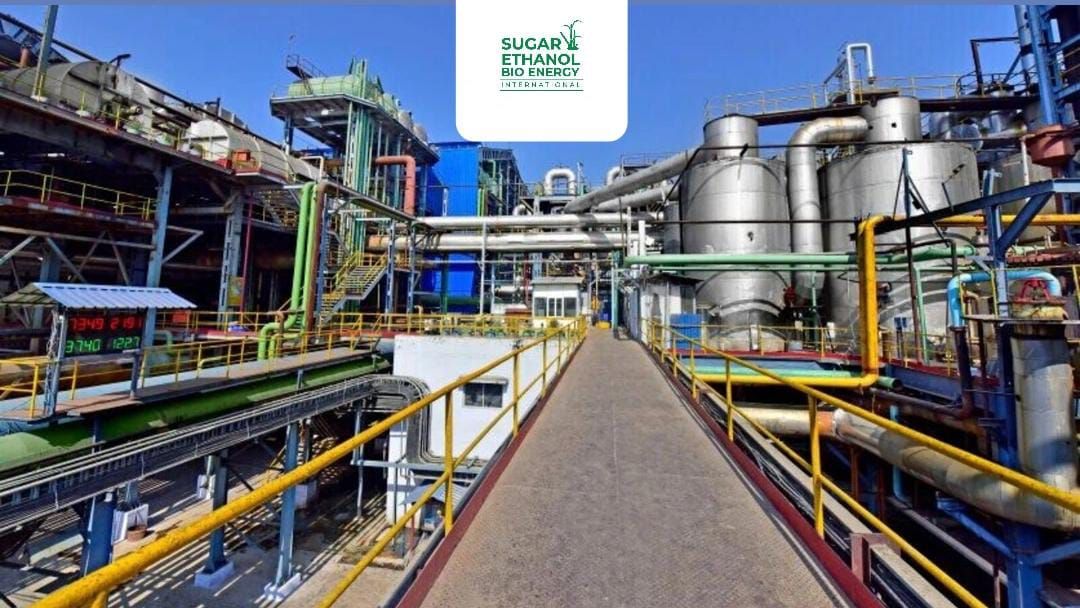For ESY 2025-26, the government has issued a tender for about 10.50 billion litres of ethanol supply. In that total, only 289 crore litres (2.89 billion litres) have been allocated to ethanol produced from sugar-based feedstocks (sugarcane juice, B-heavy molasses, etc) — about 28% of the requirement. The remaining ~72% (≈760 crore litres) is allocated to grain-based feedstocks. At the same time, for ESY 2025-26, the government has lifted the cap on diversion of sugar to ethanol (from sugarcane sources) — i.e., sugarcane juice, syrup, B-/C-heavy molasses may be used without quantitative restriction.
The sugar industry (mills, distilleries) has invested heavily (over ₹40,000 crore) to build ethanol-production capacity on sugarcane/sugar-based feedstocks.
But with only 28% allocation, much of that capacity risks lying idle. If less sugar is diverted for ethanol, more sugar remains in the domestic market → risk of build-up of unsold sugar, pressure on sugar prices. Mills depend on ethanol revenues (in addition to sugar) to pay sugarcane farmers. Reduced offtake and weak sugar prices could delay cane payments and create arrears.
For sugar-based ethanol, production costs have gone up (e.g., sugarcane cost, etc) but procurement/price from OMCs has not kept pace → margin squeeze. For example: cost of production from B-heavy molasses ~Rs 66.09/litre, from sugarcane juice ~Rs 70.70/litre; procurement prices only Rs 60.73 & Rs 65.61 respectively.
The shift towards grain-based ethanol feedstocks is seen as disadvantaging sugar‐based ethanol producers. The sugar industry claims the policy is favouring grain over sugar.
India’s sugar production for the 2025-26 season is estimated to rise significantly — e.g., ~34.9 million tonnes (or 349 lakh tonnes) — and domestic consumption estimated lower (~28-28.4 million tonnes) according to the industry body.
Thus the diversion of sugar to ethanol is critical to avoid a sugar glut and falling prices. The government has allowed higher flexibility in sugar diversion (cap removal) but the actual allocation to sugar-based feedstocks remains low in the ethanol supply tender. Higher allocation share (they want ~50% or more of ethanol quota for sugar-based feedstocks). Revision of ethanol procurement prices for sugar-based feedstocks to cover higher costs. Increase in minimum selling price (MSP) of sugar, which has remained static (Rs 31/kg since Feb 2019) despite rising production cost (now estimated ~Rs 40.24/kg).
If sugar diversion to ethanol is low, mills may face weak sugar revenues, idle distilleries, higher inventory costs, and risk of cane payment delays. Potential delays in cane payments; income uncertainty if mills underperform. The government seeks to reach ~20% blending (E20) of ethanol in petrol; alcohol-fuel policy depends on ethanol supply from multiple feedstocks. The sugar industry fears its role will shrink. Rising production coupled with lower diversion could lead to surplus; sugar prices may decline further unless exports or diversion to ethanol increase.
While the policy aims to push ethanol blending and supports use of sugarcane/sugar-based feedstocks (by removing cap on sugar diversion), the actual allocation under the tender heavily favours grain-based ethanol. This mismatch is creating a disconnect: big investments in sugar-based ethanol capacity may not get fully used, risking financial stress in the sugar industry and impacting farmers. If the imbalance is not addressed (allocation, price realignment, sugar MSP, exports) the sugar industry sees a distress call for the 2025-26 season. If you like, I can send you the full article and other related articles (with deeper data and commentary) including export-quota proposals, region-wise impacts, and specific mill/farmer scenarios.



